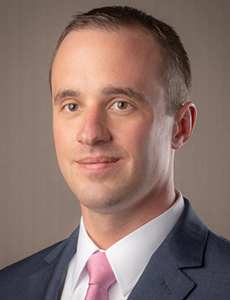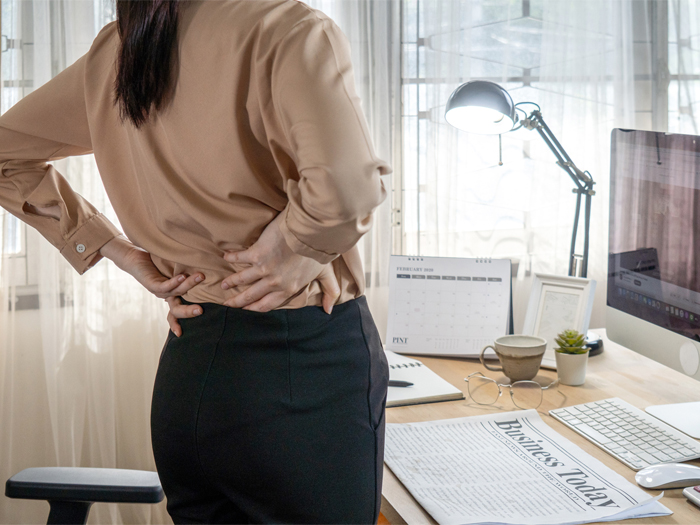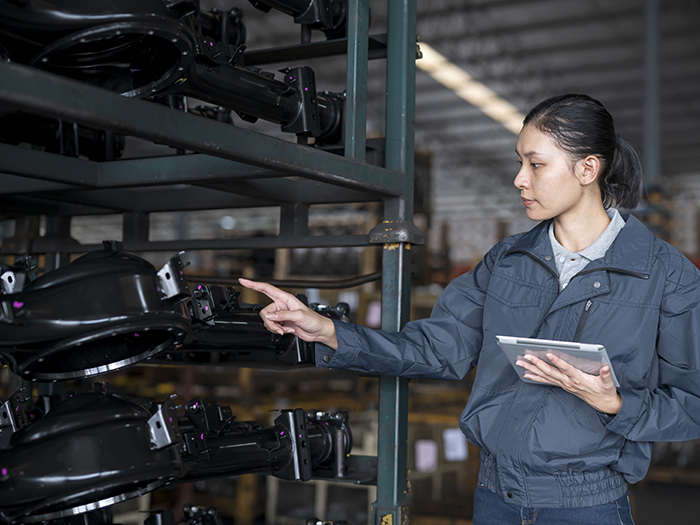Sponsored Content by The Hartford
How Connected Devices Are Changing the Future of Risk — and What that Means for an Insured’s Claims Mitigation Process

As the world continues to invest in growing technology and the internet of things (IoT) evolves to offer more in the way of risk solutions, it’s no wonder that businesses and their risk teams are looking to utilize the capabilities offered.
One prominent method is through connected devices, which enable businesses to proactively assess and address risk concerns that could lead to future claims. These devices include any sensor that is capturing and sharing data on a network in real time.
“We could be looking at cameras, smart devices — like wearables, watches or cell phones — or even smart vehicles equipped with sensors,” said Dan Campany, Head of IoT Innovation Lab at The Hartford. “Such devices are being utilized by companies to mitigate the risks associated with water, fire, theft, automobile accidents and worker injury,” he said.
And these devices are gaining traction. Insureds are always interested in ways they can better manage their risks, and insurers are constantly looking for ways to improve and better their offerings. For Campany and his team at The Hartford, the goal is to collect data to provide unique risk insights for risk engineering teams, underwriting, pricing and claims handling within insurance.
“We’re looking at the ways connected devices add a practical purpose for customers,” he said. “We look at our biggest loss drivers and then we look at this technology to help overcome the associated risk and losses.”
Here are some of the ways connected devices are improving the risk landscape in commercial P&C and how carriers and insureds alike can benefit from them.
Connected Devices Up Risk Mitigation Strategies, Help Prevent Claims

Dan Campany, Head of IoT Innovation Lab at The Hartford
There’s no question that both carriers and customers benefit from successful claim mitigation. That is why, above all else, connected devices are being utilized to do just that.
“The proliferation of connected devices enables continuous, remote monitoring with faster response times in the event of a claim scenario,” Campany said. “Additionally, that same data being collected can be used to proactively address risk areas, like water leakage or similar issues.”
When claims are avoided, that leaves the carrier with lower costs and insureds with less anxiety, hassle and business interruption as a result.
“In theory, a significant proportion of claims should be preventable,” Campany said.
Simply put, connected devices alert insurer and insured alike that a claim situation is occurring or is about to occur. That could mean alerting the proper point person to a busted water pipe or to a fire igniting on a property. Action to mitigate such risk can be taken immediately.
These examples, of course, are the extreme. They’re happening in real time and require a quick response. A loss may still occur, but thanks to the connected device’s alert, the damage can be lessened.
So too can the damage be prevented.
“Think of workers lifting with bad posture or drivers who are distracted,” Campany said. “Neither is an imminent loss, but it is a condition that can lead to more losses overtime if not addressed.”
Sensors collecting data on the worker’s technique or the driver’s potential swerving and hard braking can alert the proper point person to the action. The behavior can be corrected prior to any injury or accident, avoiding a claim altogether.
Customer Value Beyond Claim Prevention
Connected devices are already in use at many companies both large and small, and many are already seeing the benefits unfold.
For Campany, one focus area that he’s seeing success in is water damage prevention. Water intrusion and property damage are some of the most frequent and expensive property loss claims filed each year, but they can be prevented.
“Water flow monitoring solutions have proven effective at detecting leaks, which could lead to water damage claims in commercial properties,” explained Campany. What these devices do is they look for tiny aberrations in the flow of the rate of water moving through a pipe. Any place that is identified as abnormal and could mean leakage is alerted to the team for further monitoring and fixing where needed.
The Hartford ran its own test of such devices to show how effective they can be. For its home office, The Hartford installed a water flow monitoring system, all but eliminating water damage incidents for the building. But the good news didn’t stop there.
“Over an eight-month period, the water flow monitoring technology helped our facility team identify over a hundred smaller leaks and five equipment malfunctions that saved over 1.5 million gallons of water,” Campany said.
The device, he said, went far beyond preventing water leaks that could cause damage.
In addition to water damage prevention, there are also a growing number of smart technologies available that look at insights and data to help optimize buildings and properties.
Smart HVAC systems, for example, are helping to manage heating and cooling costs. Computer vision can detect things like trespassing and slip and falls to help keep officed and employees safe. Predictive maintenance is also mitigating expensive equipment breakdown issues.
“There are a lot of capabilities these devices have for the property,” said Campany. “By offering smart building services to customers, insurers can improve their understanding and ability to mitigate risk while also delivering value to the customers beyond the insurance policy. The question then becomes, how does the insurance carrier work with that data and that customer to create additional value?
“Insurers can also use connected device data for real-time, continuous underwriting to improve the accuracy and granularity of exposure information,” Campany said.
“Think about changes in foot traffic for retail customers during the pandemic or think about vehicles that are at a job site all day versus navigating urban traffic. All of these different avenues of data collection can hone in on the exposures each scenario brings and how that impacts claims for a business. It all contributes valuable data underwriters can use to understand and write the individual risks.”
Insureds Need a Strong Partner that Understands the Nuance of Connected Devices
It’s clear that there exists an enormous opportunity for insurers to capitalize on connected devices by combining risk mitigation and value-added services for customers. Having insurers on board will take connected device use for loss prevention from a niche scale to mass adoption for the industry.
That is also why expertise and advice on connected devices are quintessential for when an insured is looking to adopt such technology into its risk mitigation mix.
“For The Hartford, we run numerous experiments with a lot of different types of devices and vendors to see what works and what doesn’t meet our standards,” Campany said.
Such experiments allow the team to better understand the devices. What are they measuring? How does the alerting system run? Are they as accurate as they are advertised to be? Is the data digestible in a way that can be made useful? From there, The Hartford will test a small selection of devices by giving them to customers and getting their feedback.
“That gives us an even deeper understanding of what exactly the customer is looking to achieve and what devices would truly meet their needs.”
To learn more, contact The Hartford’s IoT Innovation Lab at [email protected] or visit their website.
The information provided in these materials is intended to be general and advisory in nature. It shall not be considered legal advice. The Hartford does not warrant that the implementation of any view or recommendation contained herein will: (i) result in the elimination of any unsafe conditions at your business locations or with respect to your business operations; or (ii) be an appropriate legal or business practice. The Hartford assumes no responsibility for the control or correction of hazards or legal compliance with respect to your business practices, and the views and recommendations contained herein shall not constitute our undertaking, on your behalf or for the benefit of others, to determine or warrant that your business premises, locations or operations are safe or healthful, or are in compliance with any law, rule or regulation. Readers seeking to resolve specific safety, legal or business issues or concerns related to the information provided in these materials should consult their safety consultant, attorney or business advisors. All information and representations contained herein are as of [March, 2021].
![]()
This article was produced by the R&I Brand Studio, a unit of the advertising department of Risk & Insurance, in collaboration with The Hartford. The editorial staff of Risk & Insurance had no role in its preparation.










